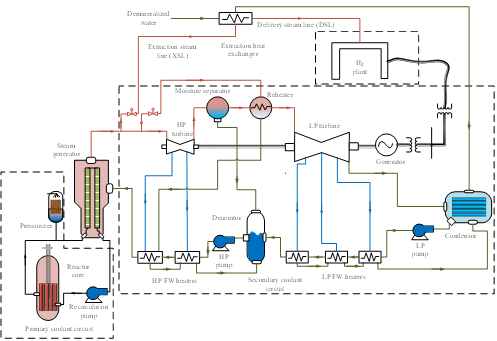Students
Dylan Jurski
Summary
Evolving conditions in the electric grid make it economically challenging for nuclear power plants (NPPs) to operate at full power consistently due to the increased variability currently experienced. When renewable sources like wind and solar produce excess energy, NPPs may have to pay other generators to reduce their output. To address this issue and ensure the continued viability of these essential assets, a proposed solution is a thermal power dispatch (TPD) system. This allows NPPs to maintain continuous full power operation by curtailing electrical output and selling the equivalent thermal energy to nearby industrial users who need substantial process heat.
A participating utility, GSE systems, Idaho National Laboratory, University of Idaho, and University of Florida have partnered to examine a TPD system designed to support a hydrogen (H2) production facility using high-temperature steam electrolysis (HTSE).
This effort incorporates a software widely used to simulate nuclear plant operations that has been modified to incorporate a thermal power dispatch system and a prototype human-machine interface to evaluate the feasibility of augmenting existing nuclear reactors. This research will improve the economic viability of existing nuclear reactors by developing and demonstrating the design and operation of a thermal power dispatch capability as an alternative revenue stream outside of electrical generation. This alternative revenue stream provides NPPs with operational flexibility to accommodate modern grid dynamics while maintaining profitability.
